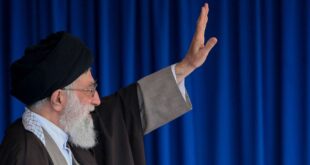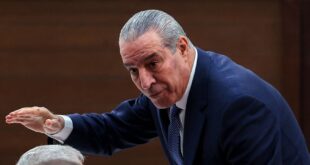William Hinton was the most renowned American scholar on post-1949 China. With unflinching resilience he defended the positive or even path breaking achievements of China and the manner the Socialist past shaped a society where the workers and peasants established their rule. His simple, flowing style is model for progressive writers to emulate, which got down to the very roots of what he addressed. Till the fag end of his life, he relentlessly upheld spirit of Marxist ideology and thus was great Marxist revolutionary in his own right.
Hinton in almost clear cut or congeal manner, without use of rhetoric, described the ascendancy of revolutionary political power in China .He delved in the very heart of the masses of China, giving a most pictorial description of the establishment of land reforms in the New –Democratic period. During the Great Proletarian Cultural revolution he gave a vivid illustration of how the struggle manifested that of genuine revolutionary character, penetrating innovations of production and workers democracy at scales untouched.With deep historical accuracy he projected how in every juncture from 1949-76 China relentlessly waged a two line struggle against capitalism to secure genuine revolutionary democracy.
Hinton passed away in 2004 on May 15th, almost 20 years ago.
Early Life
From his teens, Hinton vibrated a thirst for Integration into the very reality of the world — scaling an unclimbed peak in Canada while still in high school, and taking a year off before college to travel around the country and the world, working his way at such varied jobs as a dishwasher, brick cleaner, newspaper correspondent and ship’s machine boy. This last took him to Japan, from where he went on to northeastern China, through the Soviet Union, Europe and finally to a ship back to the US. After such an education, it is not surprising that at Harvard he felt too far away from “the real world”. Despite performing with flying colours academically there, he transferred to Cornell to study agriculture.
It was reading Edgar Snow’s Red Star over China in 1942 that sparked a radical transformation in him,from a pacifist to a Marxist. From then on, whatever the diverse range of his work — writer, farmer, farmers’ organiser, agricultural expert, newspaper correspondent, film-maker and myriad other jobs — he classified himself principally as a Marxist revolutionary. ”
He pegged his way back to China in 1945 and again in 1947, the last time as a tractor technician with the United Nations Relief and Rehabilitation Agency. He managed to stay on in Communist-held north China teaching English, and stole the opportunity to join as an observer a land reform work-team sent to Long Bow village in Shanxi province. The following six months in Long Bow was the turning point in his life. He took a thousand pages of notes, and played an integral part or focal role in the revolutionary transformation of China.
Upon his return to the US in 1953, his notes and his passport were seized and he was hauled up before the Senate Subcommittee on Internal Security. Still with utmost relentlessness he trod all across the US to uncover the truth about the Chinese Revolution. That year alone, at the height of McCarthyism, he delivered 300 such talks.
Fanshen (1966)
‘Fanshen’ was a true classic documentary .projecting how agrarian revolution was undertaken with absolute democracy from below or people’s participation. Fanshen was first published by Monthly Review Press in 1966. It is a comprehensive narration of how land reform was implemented in one village—Long Bow—in northern China. It recounted instances of everyday life as no book had done. Hinton first visited China in 1937. He returned in 1947 with the United Nations Relief and Rehabilitation Administration and stayed on in the liberated areas of north China as a tractor technician and teacher until 1953. During that time, residing in Long Bow, he first hand witnessed the crystallisation of the Chinese Revolution.
Along with his Chinese academic colleagues, Hinton advised the residents of Long Bow on the complicated tasks of teaching peasants to read, breaking up old feudal estates, insuring the equality of women, and replacing the old magistrates who governed the village with elected councils. Hinton recorded more than one thousand pages of notes about what he saw. Here he gave a meticulous and accurate narration of the not only successes and failures of the revolution, but the deep tumours or contours of struggle, the rebellion to change, and the uniquely Chinese process, often painful and violent, of criticism and self-criticism.
According to a directive, this was issued by the Central Committee of the Chinese Communist Party on February 22, 1948, the villages of the Liberated Areas fell into three basic types. Included in the first type was those in which land reform had been successfully carried out and only minor readjustments and corrections were needed to complete the movement. The second type comprised the villages where equal distribution was more ragged, landlords and rich peasants still owned more and better land than the average and many cadres had received more than their fair share of the “fruits.” In the third type were those villages where, in spite of certain efforts at equal distribution, land reform had not been effectively carried out and feudal relations of production still remained dominant.
Apart from its accuracy and scale of sympathy, Fanshen made no attempt to exonerate serious offences by Party members and even errors of Party policy, and it made no attempt to eulogise the people. Instead it, it uncovered the process by which those errors were corrected, wrongs righted, Party members reformed, and people convinced: criticism and self-criticism not only within the Party, but also by the people. It concretely illustrated the manner people exercised authority with the party the leading force.
The revolutionary land reform in Long Bow was landmark event in transcending material change.. First, where once each peasant family struggled for sheer survival, it now had enough to live on; and second, the surplus of agriculture was no longer drained off by a parasitic class of landlords, but remained in the hands of the people for reinvestment. But it also had striking political and cultural impact. “Fanshen” meant literally “to turn over”. In the course of the Chinese revolution it derived meaning to eradicate the landlord yoke by seizing land, stock, implements and houses, and further, by transforming society and culture. Peasants, as long under the hold of regressive and fatalistic philosophies which taught them to bow down to feudal oppression (how familiar we are with that phenomenon in India!), for the first time were empowered with democracy , and began to think in terms of their own organised body to govern their lives. Fanshen‘s significance was not limited to understanding the Chinese revolution. Hinton wrote in his preface of 1966:
“I believe that this book is at least as timely today as it would have been had it come out eighteen years ago when I first gathered the raw notes for it in Long Bow Village. What happened in China yesterday may well happen in Brazil, Nigeria or India tomorrow.”
Thirty-eight years since he wrote those words, they remain ironic: India has yet to undergo its fanshen, and its negative agrarian scene manifests the backwardness of Indian society and economy.
The peasants now had land of their own, but their holdings were fragmented, further divided into scattered strips, paving no ground for mechanisation. There was vast surplus labour available and there was need for major capital construction to improve agriculture (dams, irrigation systems, drainage networks, hill terraces, reclamation of wetlands, and so on). A larger pool of surplus was required for investment in rural industry, and this was possible only in a collective. Collectivisation was thus the only methodical path, governed not by the contradictions in the existing situation.
Hundred Day War (1972)
This is not a definitive history of the Great Proletarian Cultural Revolution at Tsinghua University but rather a compilation of some rough notes taken from conversations with a few participants.. Much of the story is recorded in collections of posters, leaflets, telegrams, and letters. Still it portrays an illustrative insight into the battles waged at Tsinghua amidst the political struggle and how seeds were sown for pat breaking moves in education.
Turning Point in China (1972)
During the Cultural Revolution, and till Mao’s death, Hinton left no stone unturned in backing Mao’s policies in such essays as Turning Point in China. However, many negative aspects during the Cultural Revolution — the injustices committed on many persons, the sprouting of opportunist elements who capitalised on the setbacks to advance their careers, and (what appeared to Hinton at the time as) the excesses and commandism of the left — shook him.
Quoting a passage in Turning Point,
“In the course of the Cultural Revolution Mao Tse-tung and his supporters, by mobilizing a great mass movement of the people, have confronted one great wave of capitalist restoration. Other waves are sure to follow. It will take decades, perhaps a century or two, before the working class can establish socialism so firmly in any one country that it can no longer be challenged. In fact this can probably only come about when socialism is established on a world scale. One can expect more cultural revolutions in China and many cultural revolutions in other parts of the world wherever working people take power and embark on socialist construction….All this indicates that socialist revolution is much more complex and difficult than most revolutionaries have hitherto supposed, that the seizure of power….is only the first step in a protracted revolutionary process and may well be easier than the steps which follow.
The heart of the Cultural Revolution has indeed been a struggle for power, a struggle over the control of state power….But it has not been a struggle over power for power’s sake….It has been a class struggle to determine whether individuals representing the working class or individuals representing the bourgeoisie will hold state power. It has been a struggle to determine whether China will continue to take the socialist road and carry the socialist revolution through to the end, or whether China will abandon the socialist road for the capitalist road. “
Shenfan (1983)
In Shenfan (1983), written as the second volume of a trilogy about Long Bow, he made a virtual about turn in his revised his evaluation of Mao’s policies.
Shenfan operated at two levels: the developments on the national plane, and those at the level of Long Bow and its vicinity as well as in Dazhai. Hinton acknowledged the basic policy differences between Mao and Liu Shauqi, but now substantiated that, as far back as in the 1959 Lushan conference, these differences were manifested a factional power struggle between Mao and Liu. The crucial question for Hinton was “whether or not it [the divergence of views between Mao and Liu] had a class nature. Were these the views of two antagonistic classes, or were they an honest difference of opinion about the best path toward socialism?… What is not so clear, at this point, is that Liu Shao-ch’i’s thesis, the call for the consolidation of the New Democratic system, was in fact a call for building capitalism.” Here Hinton derived , the Cultural Revolution was not an upheaval for working-class power, but for Mao’s ambition to secure the chair.
Hinton asserts in Shenfan that Mao had to accept the blame for these leftist excesses because he refused to initiate mass campaigns to terminate them. Hinton also writes that Mao was adopted China’s Confucian and feudal culture to arouse a personality cult (766). Still, Hinton supports Mao’s political outlook and policies against Liu and other leading capitalist roaders in the party (760). In one chapter, Hinton strongly supports the 16 Points that launched the Cultural Revolution and explains them in detail. Hinton argues that the 16 Points were in the main relegated; being replaced by powerful currents of factionalism.
Shenfan starts immediately from Hinton’s classic Fanshen. Hinton compiles a mainly oral history of Long Bow village during socialist construction. He demonstrates the fruitfulness of Mao’s socialist road in agriculture in Long Bow, and in the Dazhai brigade in southern Shanxi province. This model brigade was hailed for its ability to “grasp revolution, promote production.” On the basis of new collective forms of organization and the stronger unity and escalated revolutionary consciousness of its members, the Dazhai brigade manufactured new infrastructural works and made profound strides in agricultural production in what were originally barren hillsides.
The book also describes in detail the unprincipled factional battles from 1966–71 that left at least 800 dead in southern Shanxi. This startled Hinton, making him much more critical of the Cultural Revolution.
Nevertheless Shenfan manifested that it was imperative to exercise the “socialist road” in agriculture advocated by Mao. It was living proof of how , even while badly managed cooperatives fared poorly, creatively led ones such as Dazhai achieved phenomenal transformations both in consciousness and productivity. Dazhai’s yields, in virtually no man s land , rivalled those of the American farm-state Iowa. Based on his direct experience, including his own labour at Long Bow, Dazhai and other places, Hinton was convinced that China was moving along the correct road towards liberation, and was undeterred by any setbacks.
Dazhai revisited (1988)
It was with “Dazhai Revisited” (Monthly Review, March 1988; also see “A Response to Hugh Deane”, Monthly Review, March 1989, both reprinted in China: An Unfinished Battle, Cornerstone Publications, 2002) that Hinton embarked on series of articles and talks through the late eighties and nineties defending the era of collective agriculture in China, and warning of the negative impact of the new policies. He began by investigating the regime’s propaganda against the collective-era Dazhai, and its claims regarding the growth under the new system. Here Hinton is at his best, intimately familiar with the economics of the cooperative. Having been an eye witness to the Dazhai yields personally, he was in a position to refute the charges that they were greatly exaggerated and to counter the claims of higher yields post-‘reform’ (inflated, for example, in the year 1984 by releasing stocks of collective grain). He noted the acute decline in capital construction or even maintenance of earlier construction, as well as the grave environmental damage being done in the new system, all of which would have a long-term effect on agriculture. Most of all, he warned that with the privatisation of land Chinese agriculture would resort to noodle-strip farming, putting productivity at an all-time low.
Hinton cited a study by the Central Committee’s Research Group on Agrarian Policy, on the basis of which the ‘reforms’ were undertaken.. This revealed that 30 per cent of the collectives (ie 240 million peasants) were prospering, while another 40 per cent faced serious problems but remained viable, and another 30 per cent were doing poorly; this matched his own observations. This showed that cooperative agriculture could succeed for the majority, and that what was required was attention to the leadership of the cooperatives that were faring poorly. In “Mao, Rural Development and the Two-Line Struggle” (Monthly Review, February 1994) Hinton demonstrated how each phase, from land reform to mutual aid to cooperatives and communes, crystallised internal contradictions that could be overcome by adopting a more complete and universal collective form. “Either that or abandon organized production altogether.”
Now Hinton again made a compete about turn in his assessment of Mao once more, admitting It was crystal clear to him now that Liu’s line was one of restoration of capitalism; that there were in fact two classes battling throughout this period; that the rebellion had its roots in their contention. “To blame Mao then for the struggle that ensued and for its outcome is unwarranted, unrealistic and unhistorical. Mao did what needed to be done given his social base, while Liu did what he had to do given his social base”. Hinton was now convinced that the conception and principles of the Cultural Revolution were a great creative landmark or rupture in history”, and Mao’s greatest contribution to revolutionary theory and practice.
Hinton was apprehensive an critical of the ‘Gang of four’ who he firmly feel distorted Mao’s line .In later period Hinton penetrated the very meat of the bone in unravelling how China had set out on road embarking a complete reversal to Socialism. His writings denote a firm grasp of Marxism in analysing the departure of the later Chinese state and earlier why on Socialist orientation abolished landlordism.
Quoting Hinton “”To blame Mao then for the struggle that ensued and for its outcome is unwarranted, unrealistic and unhistorical. Mao did what needed to be done given his social base, while Liu did what he had to do given his social base”. Hinton now felt that the conception and principles of the Cultural Revolution were “a great creative departure in history”, and Mao’s greatest contribution to revolutionary theory and practice.
Great Reversal (1989)
In the Great Reversal Hinton delves into a detailed endeavour of how Deng and his fellow capitalist roaders dismantled collective agriculture in the 1980s through the imposition of the “family responsibility system.” This included a frontal assault on the model brigade in Dazhai. Hinton’s visits and talks with knowledgeable people inside China allowed him to refute the lies of the regime about the smashing “successes” of the so-called reforms. Hinton was also in Beijing during the Tienanmen crackdown in 1989, in which the army killed at least 2,000 civilians and injured thousands more.
By the time he came out with The Great Reversal in 1990, Hinton’s view of the Cultural Revolution reaffirmed his position of the early 1970s. He r asserted that Mao correctly stood by the opposition in regard to what he represented. Since Mao’s death and the dismissal of Hua Guofeng from office, Deng and his group have dismantled, step by step, almost the whole of the economic system and the social and political superstructure built in the first thirty years following liberation, and they are rushing to finish off what remains….
Mao predicted this, called it the “capitalist road,” and called Liu and Deng “capitalist roaders.” He launched the Cultural Revolution in a historically unprecedented campaign to dismantle them from power and prevent them from carrying out their line. In the end he failed.
“The Cultural Revolution unleashed action and counteraction, initiative and counter-initiative, encirclement and counter-encirclement, all sorts of excesses, leftist and rightist, and an overall situation that spun out of anyone’s control. To blame Mao alone for the disruptions caused by this struggle, for the setbacks and disasters that ensued, is equivalent to the Guomindang blaming the Communists for the disruptions of China’s liberation war…”.(156–57)
“Due to historical circumstances peculiar to China, all the politics of the post-war era—all the forces that mattered, all the issues that counted—tended to concentrate inside the Communist Party. Thus the struggle took the form of an internal contest for control of the party and through it for control of the country. Mao saw this phenomenon pretty clearly and began a struggle against the opposition very early. As time went on the struggle escalated, reaching a climax in the Cultural Revolution.”
In 1991 in speeches at Harvard University Hinton highlighted the negative consequences for China as it became increasingly integrated into the imperialist-run global economy, and its inevitable reversion to being a semi colonial country dominated by the Western powers and Japan While negating the ability of China to save itself by garnering export markets with its brutal strategy of low-wage primitive accumulation, Hinton’s analysis has proved accurate.
Conclusion
Hinton is without doubt a reference encyclopaedia in China and his work is invaluable even today, to nurture Marxist spirit by recording achievements of Socialism and dispelling myths that China from 1956-76 committed horrors and robbed people of their freedom, or that China after the 1980’s was treading the Socialist path. Above all Hinton underlined that revolution was absolutely imperative and shimmered road of ‘Be Red and Expert.’
Possibly where Hinton was wanting was that he could not detect why China trod on the capitalist road, or a Socialist Revolution was averted after 1976.He also did not clearly project the mistakes in practice of massline during the Cultural Revolution, or reflect on the setback to the revolutionary committees or dissolution of people’s communes. Hinton also did not assess the forces resurrecting the path of the Cultural Revolution after 1978 or possibility of resurrection of Socialist Revolution. Hinton barely reflected the psychology of the Chinese masses or what was creating obstacles for another revolution to arise. Hinton also could not properly analyse whether China had completely transformed into a capitalist society or an imperialist country, or still remained within the boundaries of a semi-feudal, semi-colonial society.
 Eurasia Press & News
Eurasia Press & News




